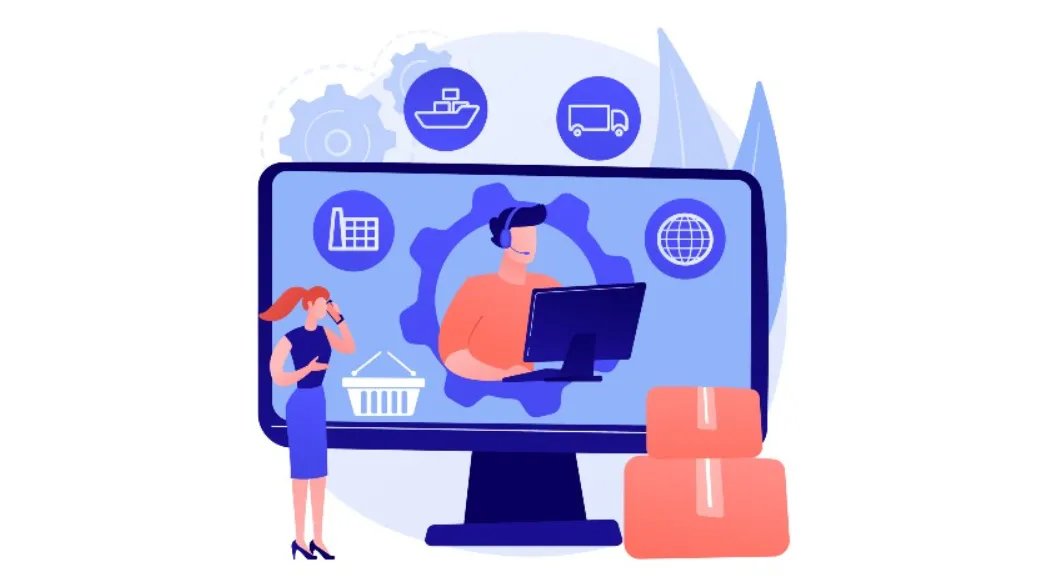That’s particularly true since time immemorial when transactions got recorded onto papyrus scrolls. Even with the advent of tools and new methodologies, strategic procurement essentials such as goods and services required for day-to-day business operations continue to reign supreme in terms of role. Directly, efficient procurement would affect a company’s financial results by bringing in the needed resources at some of the most beneficial costs.
Table of Contents
What is a Procurement Process?

The procurement cycle is a systematic approach that an organization applies when it acquires the goods and services that it may require. This cycle, apart from saving costs and time, is also an assurance of ensuring durability in the partnership with the suppliers.
It involves a sequence of steps, including initiating a requisition to the final approval of invoices. The procurement process consists of requesting proposals and acquisitions of goods and services while purchasing generally refers only to the act of buying goods. Purchasing would indicate the general act of buying goods and services for an organization. Procurement includes a more detailed activity of securing such goods and services to incorporate aspects of selection, placing of orders, receipt, and payment processes. Each organization will, therefore, tailor its procurement strategy to meet specific needs and befitting operational context.
Of these differences, every procurement strategy worldwide revolves around three elements: process, People, and Paperwork. Together, they ensure an effective acquisition system.
1. Process
Establishing a long-term relationship with a vendor contains specific guidelines reviewed by the companies in order, purchase acquisition, and payment of goods and services. Such guidelines are better known as the structured steps through which the companies can improve and enhance the trend of maintaining dependable and beneficial partnerships with suppliers.
2. People
In this regard, it, therefore, remains of great importance to involve the right stakeholders in the procurement cycle for its success since they are the people who initiate or authorize each stage of the process. The number and involvement of stakeholders will typically correlate to the risk and value of the purchase, indicating the stakeholders’ criticality in practical procurement functions.
3. Paper
Proper documentation and organization of paperwork are essential in every stage of the procurement process. Without these elements, companies risk wasting significant time, effort, and labor. All documents involved are meticulously collected and stored, not only for reference but also for auditing purposes, ensuring the process remains efficient and accountable.
Critical Stages of the Procurement Cycle

The procurement process encompasses multiple critical components such as identifying needs, researching suppliers, analyzing value, initiating a purchase request, undergoing a review phase, converting requests into purchase orders, administering contracts, monitoring and evaluating delivered orders, executing three-way matching, completing payment, and maintaining records.
Outlined below are the seven essential steps in the flow of the procurement process:
Stage 0: Identifying Needs
In any procurement process, the needs recognition stage is critical to businesses as they get an opportunity to map out, in a strategic approach, how to acquire the goods and services required effectively and efficiently in a cost-friendly manner. This is a stage to establish an identity with exact requirements for an organization; it ensures that the planning of procurement of required resources is done in time and helps economize.
Stage 1: Submit Request for Purchase
Purchase requisitions are written requests, formal or in electronic form, done by internal stakeholders or departments to the procurement team outlining the need to purchase certain goods, services, or works. These documents contain essential details required to procure the right resources and ensure proper consideration of the organizational needs.
Stage 2: Review of Requisition
The procurement cycle begins when a purchase requisition receives approval and undergoes a verification of the available budget. During the review phase, key personnel such as functional managers or department heads examine the requisition package. They confirm the actual need for the requested goods or services and ensure that sufficient funds are accessible.
Once approved, purchase requests are converted into purchase orders (POs). Conversely, any requisitions that do not meet approval are returned to the originator, along with an explanation for the denial. This entire process can be streamlined and managed effectively using straightforward purchase order software.
Stage 3: Issuing Requests for
Upon approval of the requisition, the procurement team defines a custom procurement strategy through a particular solicitation process. This solicitation strategy, by definition, is specific; the complexity of the solicitation is directly related to the complexity of the requirements.
Through the suppliers, the procurement team sends multiple RFQs (requests for quotations) after approval of budget expenditure. The requests are compiled and evaluated, and thus, the procurement takes place with the most eligible supplier for that specific requirement.
Stage 4: Evaluation and Contracting
After solicitation, the procurement team shall evaluate the supplier’s proposals, specifically on quotations and delivery schedules. This is to come up with the best-suited supplier to meet the present requirements.
The process follows with the negotiation from the supplier and concludes with the agreement to sign an agreement. After that, the purchase order is dispatched to the selected supplier. After the formal acceptance and acknowledgment of this purchase order, this becomes a contract enforceable by the law.
Stage 5: Order Management
Purchase Order: Sent to the supplier of choice based on the terms in a newly signed contract, existing standing agreement, or predefined list price. The supplier then sends the purchase order to them. The supplier should then deliver the goods or services in the given period. Upon receipt, the buyer shall check for compliance with the agreed specifications. In case of discrepancy, he shall immediately advise the supplier.
Stage 6: Approve Invoices, and Disputes
The above is a critical benefit in the procurement cycle through the implementation of procurement software that avails competitive advantages due to increased efficiency and enhanced accuracy.
This software would allow you to have a three-way match in place: a process that offers correspondence between the Goods Received Note (GRN), the Supplier Invoice, and the Purchase Order. This would give you the guarantee that the order is error-free and free of any discrepancies. Confirmation upon this matching is done, and approval of the invoice takes place. Then, the payment process is undertaken, therefore ensuring the whole procurement operation is very expeditious.
Stage 7: Documentation and Records Management
Once the process reaches completion, the buyers record the transaction with great detail for accounting and auditing. All supporting documentation, from original purchase requests to completed and approved invoices, is filed in an orderly and systematic manner in one repository. On the other hand, this organized storage will give easy access to future referencing and compliance checks. Further, it will foster transparency and accountability in the procurement process.
Phases of Procurement

Generally, these three broad primary phases that the whole process of procurement can be segmented into include sourcing, purchasing, and receiving, which generally represent the three major phases through which procurement operations are typically structured.
Sourcing Phase
This encompasses the early actions where the business determines its requirements, formulates a purchase requisition, and evaluates potential suppliers. Maintaining robust relationships with suppliers is advisable even after these preliminary sourcing activities. Such relationships provide a foundation for suppliers to gain insights from partners, enhance their offerings and processes, and foster mutual trust.
Acquisition Phase
This is the final phase of the procurement process, dealing with both establishing and finalizing the terms of the purchase. It is at this stage that detailed negotiations with selected suppliers are carried out to obtain the best possible terms. Once the terms and conditions are agreed upon, the procurement team will create and issue purchase orders. The next activity that follows is the receiving of the ordered goods and services. Items will be inspected according to specified requirements and required quality standards to accept the delivery. The practical approach ensures that the procurement process attains efficiency, acquires needed resources, and guarantees effectiveness.
Payment Phase
This is the stage of the procurement process that deals with defining and closing the purchase terms. It involves detailed negotiations with selected suppliers to get the best possible terms. Further, once the terms are agreed, the procurement team creates and issues the purchase orders. After that, it moves on, waiting for the ordered goods and services to be received. Items that need to be delivered are scrutinized further to ensure they meet stipulated requirements and quality standards. This facilitates an effective and efficient procurement process as it ensures that only the required resources are acquired.
Challenges in Procurement

In essence, without great procurement software, you’ll be navigating the complexity of procurement. Here are some of the significant difficulties you would face:
- Supplier Diversity Network: In the procurement world, it is usually inevitable to deal with different types of suppliers from diverse scopes, most of them within separate sectors. Managing it could yield inconsistent service levels, complex contract negotiations may ensue, and sometimes, it becomes challenging to achieve the scale of economies or negotiate preferred terms.
- Limited Spend Transparency: The translucent nature of the procurement expenses has been elusive, rendering the tracking and analysis of costs cumbersome. Such opacity in managing expenses can indeed be an obstruction that complicates the budgeting and strategic planning processes.
- Uncontrolled Spending: In most organizations, decentralized departments make independent purchase decisions. Such decentralized purchasing is likely to result in unchecked spending as employees go around the approved procurement procedures. Hence, costs, variable quality, and opportunities for cost savings are realized.
- Manual Operations: Besides, overreliance on manual, paper-based approaches to procurement management is usually inefficient, error-prone, and slow. This will demand much labor and, in turn, reduce productivity, resulting in errors in processes such as purchase requests, approvals, and invoices.
- Compliance and Risk Issues: The characteristics demanded by compliance with procurement under the internal protocols and those required by legal standards about external matters include the robustness of the contracts signed with the suppliers. Those requirements, together with various risks such as supplier failures and data security issues, need to be managed and critically mitigated.
- Operational Focus Over Strategic: Often, procurement becomes more focused on transactionality rather than being strategically driven. This can make the organization oblivious to opportunities that may present themselves for cost reduction, consolidation of suppliers, or opportunities for strategic alliances to provide value over and above simple transactional interfacing.
In dealing with these challenges, organizations shall have to put in place efficient procurement processes, notably with regard to data transparency, which engenders collaboration among stakeholders and inspires strategic sourcing initiatives that empower the organization to leverage and optimize their procurement practices.
Enhancing Your Procurement Operations

So far, we have comprehensively discussed the challenges in procurement; now, we will continue to discuss various strategies that can enable your organization to overcome these and ensure a sound and efficient procurement system.
Digitize and Automate Processes: Use technology and automation tools to hone the buying cycle. The introduction of source-to-pay solutions may optimize the management of suppliers, purchasing, invoices, and contracts. It leads to reduced manual errors and an overall increase in efficiency.
Centralize Procurement Functions: Create a centralized platform for your procurement team to handle all activities. This will help automate workflows that ensure transparency and accountability, bringing about more efficiency and probable cost-saving.
Spend Analysis: Detailed analyses of your procurement spending will be done to identify patterns that pinpoint cost-saving opportunities and target categories for strategic sourcing. Such analysis helps consolidate the supplier base and enables better contract terms and volume discounting.
Adopt Strategic Sourcing: Implement strategic sourcing towards identifying best-suited suppliers through competitive bids and more effective negotiations. Its purpose is to identify critical suppliers and form strategic partnerships to sustain cost reductions/savings while enjoying improved supplier relationships.
Develop Clear Procurement Policies: Develop strict procurement guidelines in line with regulatory standards and internal policies. Control the approval processes and ensure adherence to spending limits. Effectively manage supplier risks, as it would also help with supporting compliance documentation and audit trails.
Encourage Cross-Departmental Collaboration: Get more involved with departments and stakeholders who will see that procurement activities are in sync with their needs at their department and stakeholders’ levels. This could further involve end-users in finding even more effective ways of meeting their requirements and increasing the adoption of the system through supplier selection.
Integrate Systems to Ensure Smooth Data Flow: Get your operational tools, from accounting software to ERP systems, linked so that there are no blocks in data transmission. This type of integration will cut down on dual processes and increase procurement process efficiency.
Monitor and Evaluate Supplier Performance: The company should continuously monitor and evaluate the supplier’s performance by reviewing the pre-established service level agreements that cover delivery timelines, product quality, and cost. Such continued appraisal supports healthy decision-making on times and modalities surrounding supplier relationships and the possible changes or substitutions thereof.
Commit to Continuous Improvement: Continuously improve by establishing a culture of continuing the progress of your procurement practices. Encourage feedback, monitor industry trends, and establish mechanisms that allow routine review and improvement of operations.
Your organization should be able to derive significant improvements in procurement efficiency, cost-effectiveness, and strategic impact from these strategies.
Collaborative Synergy between Procurement and Finance

Traditionally, most organizational procurement and finance departments have run independently. This isolation has often caused friction, mainly because, while procurement has the role of spending money to acquire goods and services, finance focuses on increasing profitability, most of the time through cost reduction.
However, with both departments allying, the strategic results could accrue to the company overall. These two departments could look at the organization’s operational aspects from a different angle. For example, a capable procurement team understands well, for instance, how to strategically source goods and services that will increase the overall profitability of the company.
The insight is of value to the finance department and, therefore, it makes it much more evident regarding organizational spending and its impact on financial health. This kind of solution may easily bridge that gap in history by adopting integrated supply chain management software, which includes data from across the organization, including finance. Such software may enable the effective collaboration of both teams to achieve common business goals. The former, in the first place, provides track progress towards these goals by presenting essential data for KPIs in a format that is friendly for the procurement team to use and understand.
FAQ
What is a procurement plan?
The procurement Plan outlines how the establishment is to be set for identifying and consolidating organizational needs and scheduling their acquisition to ensure availability when needed. It details the methods for identifying and selecting vendors, contractors, or consultants.
What is a procurement strategy?
The long-term procurement strategy is designed to acquire needed supplies from a group of competent vendors that guarantee timely delivery of quality goods and, at the same time, meet purchasing agreements.
What is considered during the procurement life cycle?
The life cycle of procurement is the complete chain of steps that a business makes towards procurement. These steps include the recognition of the need for an item or service, looking for and selecting the right supplier, negotiation of terms, issuing a purchase order, and finally, receiving the goods.
What activities are involved in procurement?
Procurement activities include the whole process from preparing and processing a requirement as a subject of procurement to receiving and paying for it. Here fall are several essential activities, such as purchase planning, setting standards and specifications, research, choice of supplier, financing, price negotiation, management of stocks, etc.
What is a procurement budget?
The procurement budget relates to the tool, through planning, allocation, and direction, of financial resources to purchase various items and services up to the set limit that ensures expenditure does not go beyond it. This will ease financial planning, enabling prior forecasting and later procurement planning to guarantee available finances for required procurement.
